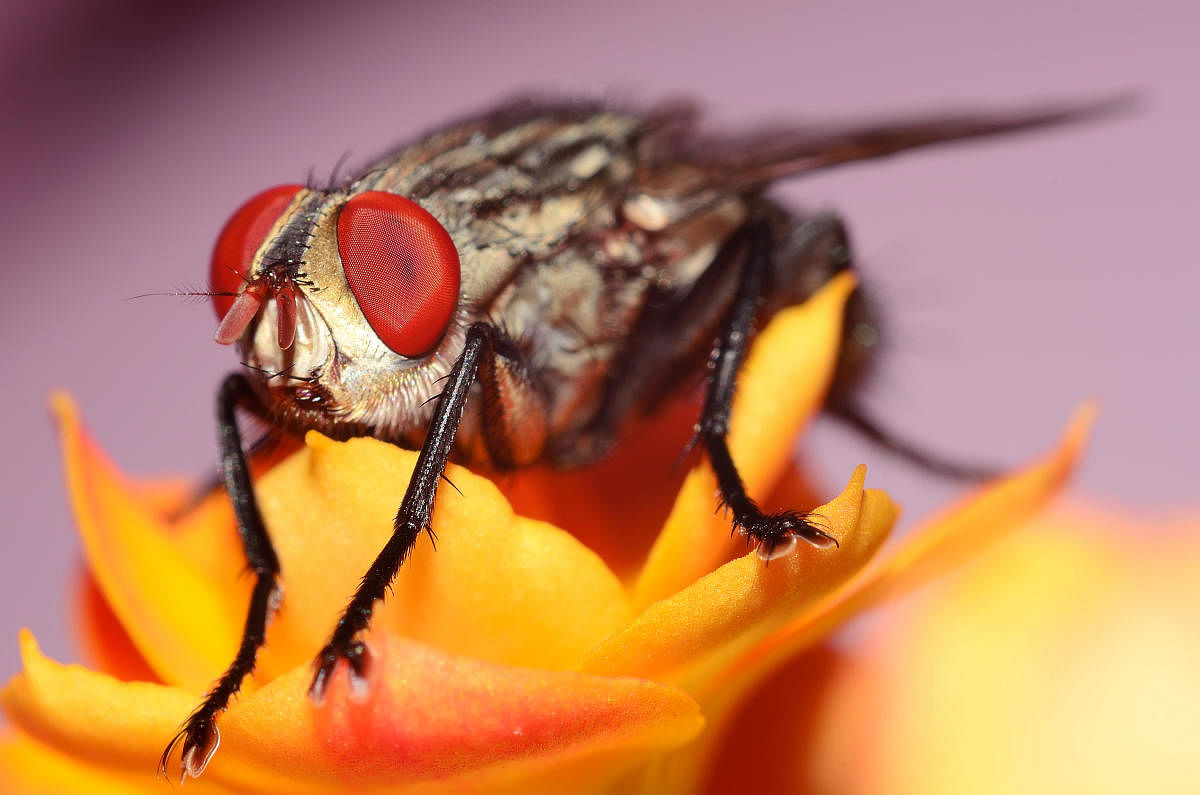Ever wondered who shares the highest number of Nobel Prizes, along with humans? At least nine scientists share five Nobel Prizes based on their work using the common fruit flies, making them partners in Nobel-worthy findings.
Model organisms are preferred in carrying out experiments on non-human organisms, particularly to understand biological processes and study human diseases, as conducting studies directly on humans is unethical in many situations. In particular, where there is a significant match in the genetic make-up, these organisms can be used to understand the effectiveness of treatments for many human diseases.
Drosophila melanogaster is a species of fly that is referred to as the common fruit fly. They have become the most-preferred model organism due to their short life span of 12 days, allowing one to run experiments over multiple generations in a few weeks. It is less expensive and easier to make large cultures of these with very less equipment. The ease of breeding them has also led them to be bred on a space shuttle to understand how space travel could affect their immune system.
In addition, they share about 60% of the human genetic makeup. They are also known to have 75% of human disease genes which make them an ideal candidate to test for interventions for several human diseases like autism, diabetes and many types of cancers. They are used in neurogenetics and as a model for studying several neurodegenerative disorders in humans like Huntington’s, Parkinson’s and Alzheimer’s disease.
Scientists' fascination with using fruit flies as model organisms is not new. One of the early pioneers was Thomas Hunt Morgan, who received the Nobel Prize in Physiology or Medicine way back in 1933. The early work by Morgan and his team using fruit flies helped understand patterns of inheritance and genetics. Since then, they have emerged as leading model organisms in genetics and developmental biology.
Muscle development
Significant research has been undertaken in India by several researchers by using these model organisms that have led to key contributions in genetics and development biology.
Notable among them is Prof K VijayRaghavan, Emeritus Professor at the Bengaluru-based National Centre for Biological Sciences (NCBS) who recently completed his tenure as the Principal Scientific Adviser to the Government of India. His work using fruit flies has led to a deeper understanding of muscle development.
VijayRaghavan studied a set of control genes called the Hox genes that play a critical role in the development of muscles and nerves during the development of an embryo. The mechanisms that control the nervous system, muscles and movements during development have now been understood through his work using fruit flies.
Researchers at the Indian Institute of Science Education and Research (IISER), Pune have also used these model organisms to study dispersal syndrome or dispersal patterns and factors that influence how organisms move.
Innate immunity
Humans have two levels of defence mechanisms to protect themselves, particularly from harmful pathogens like bacteria and viruses. Innate immunity is the first line of defence that gets activated when attacked by an external pathogen. If this system fails, the adaptive immune system gets activated.
The fruit flies do not have an acquired immune system like the higher-order vertebrates. Hence they serve as good candidates to understand the innate immune system. Several genetic and molecular studies have shown that some of the key components of the innate immune system have remained the same in humans, despite divergence during the course of evolution in comparison to fruit flies through a common ancestor millions of years ago.
The Toll signalling pathway and immune deficiency pathway are examples of innate immune mechanisms that were discovered using fruit flies. They are responsible for the production of anti-microbial peptides and other amino acids that fight against pathogens. Studies conducted using the fruit flies were responsible for identifying these key pathways of innate immunity that led to Prof Hoffman receiving the Nobel Prize in 2011.
Scientists at Bengaluru’s Indian Institute of Science (IISc) have used fruit flies to study many human diseases and immune mechanisms. For instance, in a study, they investigated whether the muscles themselves play a key role in killing pathogens or do they rely on resident immune cells to fight the infection. They used model organisms to study the ability of skeletal muscle cells to initiate innate immune responses upon experimentally introducing bacterial infection.
Researchers at IISER Mohali led by Prof N G Prasad also found that fruit flies developed immunity without a trade-off. They introduced harmful bacteria to fruit flies and studied them, and found that immunity developed with no ‘trade-off’ of key traits like longevity and fertility in fruit flies.
In a more recent study, Prof Prasad and colleagues investigated the fitness costs associated with traits that are evolved in a host-pathogen coevolution system. The results are published in the Proceedings of the Royal Society B (Biological Sciences). They used the Drosophila melanogaster (as host) and Pseudomonas entomophila (as pathogen) to experimentally co-evolve. The study conducted over 17 generations of selection, found no major cost of increased post-infection survivorship. Thus, the study suggested that increased host immunity and pathogen virulence may not be costly.
Fruit flies help us enhance our understanding of key biological processes, which in turn helps us combat several key diseases. Next time, you see a fruit fly, please be thankful!
